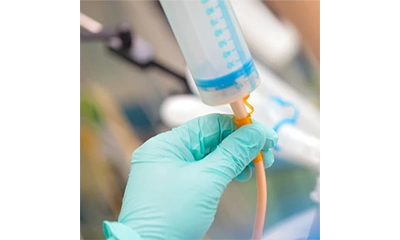Understanding Enteral Nutrition: A Complete Guide
Learn about enteral feeding options, when they're needed, and how they can significantly improve nutritional outcomes and quality of life.

What is Enteral Nutrition?
Enteral nutrition refers to the delivery of nutrients directly into the gastrointestinal tract through a feeding tube. This method of nutrition support is used when a person cannot consume adequate nutrition by mouth, but their digestive system is functioning normally. Unlike parenteral nutrition (intravenous feeding), enteral nutrition maintains the natural digestive process and helps preserve gut function.
Key Benefits of Enteral Nutrition:
- • Maintains normal digestive function
- • Reduces risk of infection compared to IV nutrition
- • More cost-effective than parenteral nutrition
- • Preserves gut immunity and barrier function
- • Allows for better nutrient absorption
When is Enteral Nutrition Needed?
Enteral nutrition is recommended for patients who have a functioning gastrointestinal tract but cannot meet their nutritional needs through oral intake alone. This can be temporary or long-term, depending on the underlying condition.
Common Medical Conditions Requiring Enteral Nutrition:
Neurological Conditions:
- • Stroke with swallowing difficulties
- • Traumatic brain injury
- • ALS (Lou Gehrig's disease)
- • Multiple sclerosis
- • Dementia with dysphagia
- • Cerebral palsy
Other Medical Conditions:
- • Head and neck cancers
- • Critical illness with prolonged intubation
- • Hyperemesis gravidarum
- • Severe inflammatory bowel disease
- • Failure to thrive in children
- • Anorexia nervosa (in specific cases)
Types of Enteral Feeding Access
The type of feeding tube used depends on the expected duration of feeding, the patient's anatomy, and their specific medical condition.
Short-Term Feeding Access (Less than 4-6 weeks)
Nasogastric (NG) Tube
Inserted through the nose and advanced into the stomach. Most common for short-term feeding.
- • Easy to place and remove
- • Can be placed at bedside
- • May cause nasal irritation
- • Risk of accidental removal
Nasoduodenal/Nasojejunal (ND/NJ) Tube
Extends beyond the stomach into the small intestine. Used when gastric feeding is not tolerated.
- • Reduces risk of aspiration
- • Allows feeding when stomach motility is impaired
- • More difficult to place
- • Requires continuous feeding
Long-Term Feeding Access (More than 4-6 weeks)
Percutaneous Endoscopic Gastrostomy (PEG)
A feeding tube placed directly into the stomach through the abdominal wall using endoscopic guidance.
- • More comfortable than nasal tubes
- • Lower risk of accidental removal
- • Allows for bolus or continuous feeding
- • Requires minor surgical procedure
Percutaneous Endoscopic Jejunostomy (PEJ)
Similar to PEG but the tube is advanced into the jejunum (small intestine).
- • Ideal for patients with gastric disorders
- • Reduces aspiration risk
- • Requires continuous feeding
- • More complex placement procedure
Types of Enteral Nutrition Formulas
Enteral nutrition formulas are specially designed to meet specific nutritional needs and medical conditions. The choice of formula depends on the patient's digestive capacity, nutritional requirements, and underlying medical conditions.
Standard Formulas
For patients with normal digestive function
- • Complete nutrition with intact proteins
- • 1.0-1.2 calories per mL
- • Suitable for most patients
- • Examples: Jevity, Osmolite
Elemental Formulas
For patients with impaired digestion or absorption
- • Pre-digested nutrients
- • Easy to absorb
- • For malabsorption syndromes
- • Examples: Vivonex, Peptamen
Disease-Specific Formulas
Tailored for specific medical conditions
- • Diabetes: Lower carbohydrate content
- • Kidney disease: Modified protein and electrolytes
- • Liver disease: Branch-chain amino acids
- • Wound healing: Higher protein and arginine
Pediatric Formulas
Specially designed for children's nutritional needs
- • Age-appropriate nutrient ratios
- • Higher caloric density options
- • Essential fatty acids for brain development
- • Examples: PediaSure, Vivonex Pediatric
Enteral Feeding Methods
Continuous Feeding
Formula is delivered continuously over 12-24 hours using a feeding pump. This method provides better tolerance and is often preferred for critically ill patients or those with feeding intolerance.
Advantages:
Better tolerance, reduced gastric residuals, steady nutrient delivery, can be used with jejunal feeding
Intermittent/Bolus Feeding
Larger volumes of formula are given 4-6 times daily, similar to regular meal patterns. This method allows for more mobility and independence.
Advantages:
More physiologic, allows for greater mobility, can disconnect between feedings, easier to manage at home
Benefits and Outcomes
Research-Proven Benefits:
- • Improved nutritional status and weight gain
- • Enhanced immune function
- • Better wound healing
- • Reduced hospital readmissions
- • Improved quality of life
- • Enhanced functional status
- • Better caregiver confidence
- • Reduced healthcare costs
Getting Started with Enteral Nutrition
The decision to begin enteral nutrition involves careful evaluation by your healthcare team, including physicians, registered dietitians, and often speech-language pathologists.
- Medical evaluation to determine if enteral nutrition is appropriate
- Assessment of nutritional needs and formula selection
- Feeding tube placement by qualified medical professionals
- Education and training for patient and caregivers
- Insurance authorization and supply coordination
- Ongoing monitoring and adjustment of the feeding plan
Important Considerations:
- • Enteral nutrition requires proper training and education
- • Regular monitoring by healthcare professionals is essential
- • Proper hygiene and tube care prevent complications
- • Most insurance plans cover enteral nutrition when medically necessary
Need Guidance on Enteral Nutrition?
Our registered dietitians and clinical specialists can help determine if enteral nutrition is right for you and provide comprehensive support throughout your journey.